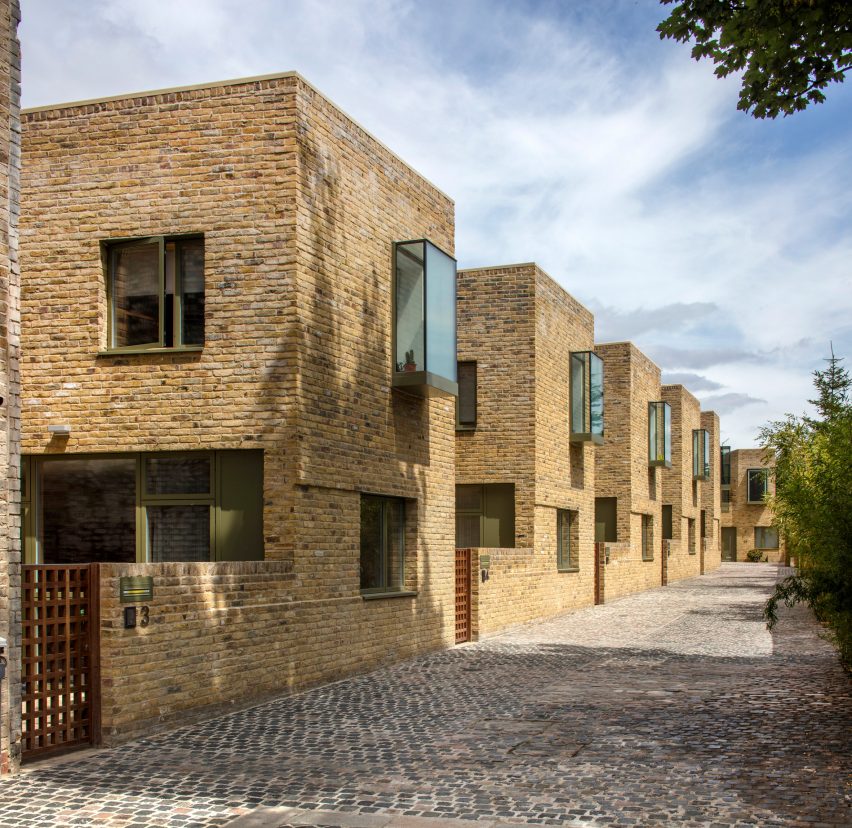
Architects should "meet us half way" on Building Better Building Beautiful Commission says UK housing minister
UK minister for housing Kit Malthouse has defended the Building Better Building Beautiful Commission, calling on architects to work with him to resist bland, developer-led housing.
Speaking to Dezeen, Malthouse asked for the architectural profession to "meet me halfway" to push developers to "allow beauty into their work".
He said the point of the government commission chaired by Roger Scruton has been missed by British architects, who have criticised it for attempting to reignite the divide between proponents of traditional and modern architecture.
Malthouse, who was appointed minister of state for housing in July 2018, said that working together architects and the government could collaborate to build houses people want.
"Post the initial volley of attacks upon me, what I urged was for architects to accept that part of the secret of success is to build what the public like," he said.
"What would be great is to move the conversation away from a confrontation into a collaboration for beauty."
Communities "need to like what's being built"
The government commission aims to address the UK housing crisis and the lack of new-build affordable homes.
"If I'm going to build 300,000 houses, I need local communities to accept them. And that means they need to like what's being built," said Malthouse, who is the Conservative MP for north west Hampshire.
"We're putting 45 million quid into the house building industry across the piece. We're not short of money to get out of the door. But it's perfectly possible to produce stuff that looks fantastic that satisfies the purists of the architectural profession and local communities at the same time."
In February 2018 the ministry for housing announced an extra £45 million of funding for community projects that would free up land for local councils to build 7,280 homes.
Architects must join government to "push developers"
Malthouse accepted that mass-housing developers, not architects, have been the real barrier when it comes to building sensitive and high-quality homes.
"Architects get blamed by association. People think the new housing estates have been designed by an architect. And in fact, it hasn't. It's been done on a spreadsheet," he said.

He acknowledged that many practices are doing brilliant work when given the freedom, citing the playful brick housing developments of Peter Barber Architects as one such example. A commitment to building high-quality homes would, he argued, give architects wider scope for experimentation.
"We want to open the door for architects, rather than fight with them."
"Here's the challenge: meet me halfway. I need the architectural profession to join with me and with Roger Scruton to cajole, propel, and push the developers to allow beauty into their work."
UK housing market "doesn't function correctly"
Malthouse acknowledged that the UK housing market is not currently providing the kind of new homes that people both want and afford to live in.
"The house-building market doesn't function correctly. House builders don't compete in the same way as they would in any other market, they're not competing on quality and design," he said.
"In what other industry do 60 per cent of people say they'll never buy a new product, that they prefer to buy second-hand?"
Rejecting bland mass housing, Malthouse said the commission aims to restore "the different, the interesting, the unusual, the eccentric, the familiar, the personal" to contemporary housing.
Problem with brutalism is "very few people liked it"
Malthouse also addressed concerns that the commission is a thinly disguised attack on contemporary architecture that is rooted in the modernist movement.
"I think a lot of people worry about the foundational phrase of modern architecture, which is that form follows function," he said. "Great architecture that has wide appeal is about a lot more than just function, it is about delight and aesthetics."

He suggested that the "battle over brutalism" is the result of architects' anxiety over their own aesthetic legacies. Over the past decade many post-war housing developments have been demolished, including Alison and Peter Smithson's Robin Hood Gardens in London.
"Many of the big debates within the architectural profession have been about the erasure of some of those supposed monuments to the future," he said.
"There was a sense from that generation of architects that this was our mark, this is what we were leaving, but the problem is very few people liked it."
"Architects surely want more than adoration of profession"
Architecture that is popular with the public, not just architecture fans, is the key to housing that can last for centuries he said.
"All architects surely want more than just the adoration of their own profession, they want to build something that is seen to be beautiful by the world. Who wouldn't want to build the next UNESCO World Heritage Site? This is how architects, fundamentally, want to leave a mark for posterity," said Malthouse."
"The challenge I'm putting down constantly to everybody is, are you building the conservation areas of the future? Will future generations treasure what you built? Or will they feel the urge to demolish it?"
Main image courtesy of UK Parliament.